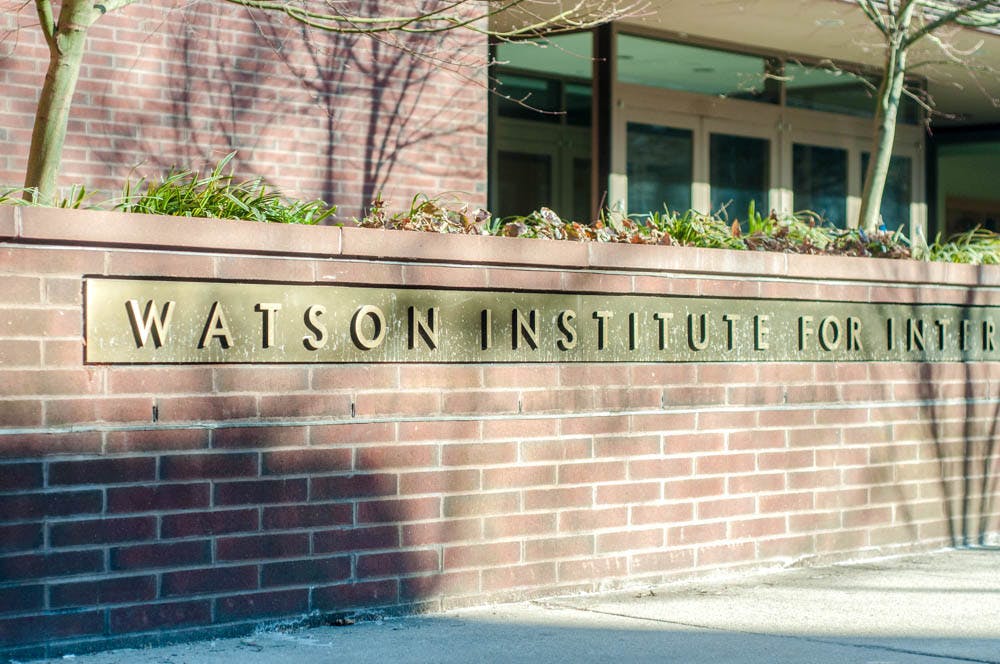Early-career professionals from Southeast Asia will convene for an institute at Holy Angel University in the Philippines from Oct. 21 through Oct. 27. Organized jointly by the Brown International Advanced Research Institutes, the Humanitarian Innovation Initiative and the Philippine Disaster Resilience Foundation, the event will allow participants to learn from a variety of expert lecturers how their communities can better prepare for and respond to natural disasters.
Since 2009, BIARI has invited scholars and practitioners from around the world to the University’s campus for intensive two-week institutes that address important global issues, according to BIARI’s website. For the last three years, HI2 has worked with BIARI to host the Humanitarian Response and Post-Conflict Reconstruction Institute, which has aimed to improve the ability of low- and middle-income nations to respond to humanitarian emergencies. Going forward, however, HI2 and BIARI will travel to the regions of the world most likely to be affected by natural disasters so that program leaders “can have the opportunity to adapt the training to the specific needs of that local setting and also be able to train more people for lower cost,” said Associate Professor of Emergency Medicine and Director of HI2 Adam Levine. Levine and his team have worked with PDRF and other local partners to ensure that the training is specifically relevant to issues faced by the Philippines and other countries in Southeast Asia.
Community resilience — or the ability of local communities to prepare for and respond to natural disasters — is critically important to disaster-prone nations like the Philippines, Levine said. When disasters occur, locals will respond first. “They’re going to be the ones who are the first to help their neighbors, the first to dig people out, the first to provide food and shelter to the survivors, the first to bury the dead,” Levine said. Governmental, military and international actors arrive later, he added.
Preparing local communities requires input from a wide variety of academic and professional fields. “Humanitarian response is a really interdisciplinary field to begin with,” Levine said. “You have to have not just the medical and public health, but also the engineering, design, anthropology, gender studies and other lenses to be able to make sure that you’re responding from a comprehensive standpoint.” More than half of BIARI Philippines lecturers and teachers are experts from the region, while others will come from academic institutions in the United States.
Rhode Island School of Design Professor of Landscape Architecture and Architecture Elizabeth Dean Hermann, who will speak at the institute, has worked for over 20 years in South Asia and has addressed issues ranging from poverty to flooding. For the last nine years, she has been working on postwar reconstruction in Sri Lanka. “It’s about rebuilding community, building capacity, building livelihoods,” she said. Hermann’s lectures will focus on gender issues and will draw from her work experiences. “In Sri Lanka, when the government failed, when all of the foreign aid agencies failed, be it during the 2004 tsunami or be it during the (civil) war, it was the women’s groups that were usually the most agile, the most easily able to regroup and organize others, and so that’s what I’m going to be talking about,” she said. “Both the vulnerability of women and also their agency.”
Hermann wants participants to understand that “they need to think at a systems level. They need to think long in advance and long after.” She added that preparedness means people are sure of their roles and priorities when disasters happen.
Pamela Gloria Cajilig, a BIARI alum and HI2 international fellow who founded Curiosity, a design research firm based in the Philippines, emphasized the importance of not only preparedness and response, but also recovery and reconstruction, which she said pose the largest challenges though they are less dramatized and less covered by media than initial disaster response. When recovery and reconstruction are neglected, “the next disaster hits and people find themselves deeper into poverty,” Cajilig said.
The Philippines is an ideal location for BIARI, Cajilig said, noting the typhoons, effects of climate change and commonality of disasters in the country. “This is really a timely and urgent topic to tackle,” Cajilig said.
The Philippines is in an earthquake-prone region that experiences many natural disasters, Hermann said. Overpopulation and high rates of poverty magnify the severity of these issues, she added.
BIARI participants will be more than just students; they will be teachers, too. “We’ll probably learn as much from the participants as from the faculty themselves, so we’ve set up each of the different training modules to be more of a discussion than just a lecture,” Levine said, and added that the lessons learned from BIARI will extend beyond the participants themselves. “We want to develop a cadre of local individuals in the Philippines and other Southeast Asian nations that can carry on their own trainings and also develop their own research programs.”
Cajilig implores institute participants to develop “a more critical and more holistic way of looking at resilience,” she said, adding that “resilience is really systemic. … It takes a lot of sectors working together and it takes real social change over the long term for communities to be truly resilient.”





